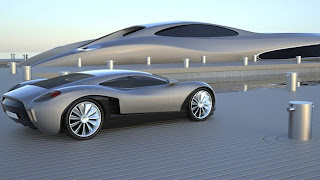



In the past year NAUTICAL LOG has written several Posts about the cruise ship industry from the point of view of safety and the evacuation of persons on board. It is clear that there is a deep concern amongst the Officers who mann these mega floating guest resorts. In the several incidents during 2010 alone there was not much effort to turnout the lifeboats in preparation should an evacuation become necessary. Why? Perhaps it is because the Masters in general are very uneasy about just what will happen if they do so. The real thing being very different from those weekly drills - no matter how conscientiously they are done. Nobody, thankfully, has yet had to launch these mega ships mega lifeboats to date. It is therefore an unknown factor if they can be successfully launched and an evacuation of 5000 persons successfully take place including the ADA passengers. You might ask does it make real sense to have certain ADA passengers on board from a point of view regarding their own safety, well the cruise lines are not given very much choice in the matter they are required by Law to do so.
As to the vessels themselves most are designed as floating resorts and not passenger ships suitable for international transoceanic voyages. Last year we had videos of furniture flying about the public areas, unsecured art items and service shops stock being demolished. Piles of dishes stacked on counters in snack bars and pub stock crashing to the deck there being it seems no seagoing racks to stow these things in. All this is truly amazing to someone who crossed the North Atlantic for four years in 1950's designed ships. Originally ships were actually designed for heavy weather passages and items were secured permanently with all that in mind. The present day collection of cruise vessels are mostly fair weather ships and suitable for calm seas in relatively sheltered waters with a Port of Refuge close at hand.
Now this design rot has spread to the megayachts which despite the difficult economic times there is always someone ready to have built. NAUTICAL LOG has selected some to illustrate the current trend and they are shown above.
The first is that of Beluga Shipping owner and while to our rather traditional ancient mariner eyes is extraordinary looking does at least appear to be a serious seagoing vessel. The design is rather that of a 19th. Century barge hull with a Star Trek concept sitting on top. Currently axe bows and bulbous noses are popular but in fact were used in the 19th. Century - so maybe those designers got it right back then.
The second megayacht looks like a crazed version of - what? Supposedly based on parts of Monaco's buildings and streets it is something that is, like those mega floating resorts, a fair weather sit-in-port vessel to keep just an owner and a dozen guests happy or happier than in their previous megayacht. It was strangely interesting to note that the tenders were launched by old fashioned davits and not any of the new launching systems - good luck with that!! Well it is their money to do what they wish with but please do not go out and get in trouble in bad weather.
Our third selection is the car and yacht however since NAUTICAL LOG is not quite sure which is which we shall leave it at that and as always wish y'all,
Good Watch.
Comments